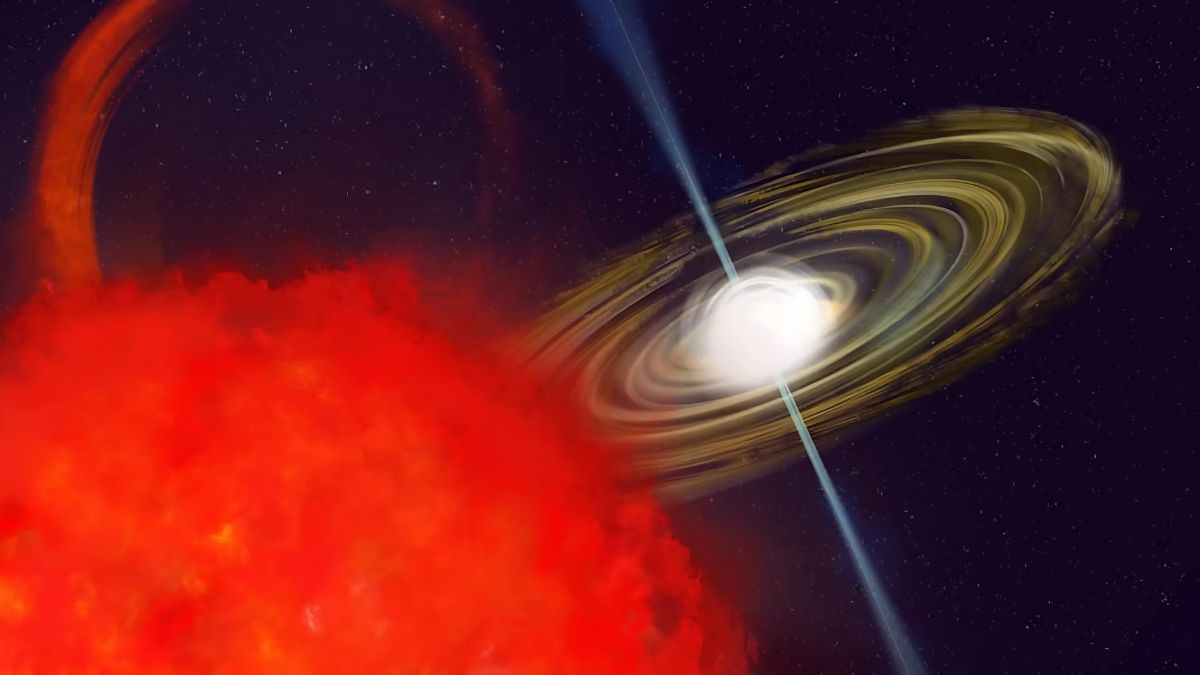When we gaze into the cosmos, we expect the unexpected. But every now and then, something appears that genuinely defies everything we thought we understood. That’s exactly what happened with the discovery of a dazzling new object—now officially called Punctum—shining like nothing ever seen before. Found in a nearby galaxy, this strange orb challenges every label we’ve ever slapped on cosmic phenomena.
Discovery
It started like any other deep-space observation using powerful telescopes. But astronomers caught something unusual in the galaxy NGC 4945, just 11 million light-years from Earth. At first, it was just a bright dot—an “enigmatic orb” that refused to fit into any known category. This wasn’t a typical star, a black hole, or even a supernova.
Instead, it burned with an energy that blew away comparisons. Its light only appears in millimeter wavelengths, invisible to most telescopes. And unlike quick flashes from supernovae or gamma-ray bursts, this object’s brightness remains steady. That’s weird. In cosmic terms, it’s like finding a lighthouse in the middle of a desert—unexpected and unexplained.
Brightness
How bright is Punctum? Let’s just say, it doesn’t play by the rules. Here’s how it stacks up against other cosmic heavyweights:
| Cosmic Object | Relative Brightness |
|---|---|
| Typical Magnetar | 1x |
| Microquasar | 100x |
| Most Supernovae | 100x |
| Punctum | 10,000–100,000x |
Even within our own Milky Way, only the Crab Nebula comes close—and that’s a vast, centuries-old supernova remnant. Punctum, in contrast, is compact, which just adds to the mystery.
Features
Punctum is invisible in normal light, radio, or X-rays. Instead, it shines exclusively at millimeter wavelengths. That means we only noticed it thanks to the ALMA telescope, one of the few instruments that can even detect this kind of emission.
What’s more, its light is strongly polarized—a sure sign of an organized magnetic field, like those found in magnetars or pulsars. But here’s the catch: none of those known objects emit at these brightness levels. It’s like finding a lightbulb that’s ten times brighter than the sun but fits in your hand.
Misfits
So, what is it? A supernova? Nope—too compact. A magnetar? Not bright enough. A microquasar? Even the most energetic ones don’t compare. Punctum is like a cosmic mash-up of all three—magnetic like a pulsar, energetic like a microquasar, and bright like a supernova, yet still… not quite any of them.
This cosmic outlier doesn’t play by any known rules. It might be something entirely new. Something we’ve never even imagined before.
Potential
That’s where the James Webb Space Telescope comes in. While ALMA showed us Punctum in millimeter wavelengths, JWST might reveal if it emits infrared light, or if there’s any dust or gas surrounding it. These clues could help crack the code. Is this a one-off oddball, or just the first of a whole hidden population of objects?
One thing is certain: Punctum challenges our assumptions about what’s out there. It might even signal an entirely new class of astrophysical objects—one we couldn’t detect until now.
The universe always has one more surprise up its sleeve. And with telescopes like JWST and ALMA working together, we’re just beginning to uncover what’s been hiding in plain sight. Punctum might be the first glimpse into a universe more bizarre—and more brilliant—than we ever dreamed.
FAQs
What is Punctum?
A mysterious, ultra-bright cosmic object in galaxy NGC 4945.
How far is Punctum?
It’s about 11 million light-years away from Earth.
Why is Punctum unique?
It shines only in millimeter wavelengths and defies classification.
Is Punctum a black hole?
No, it doesn’t behave like a black hole or fit known types.
What could Punctum be?
Possibly a new class of cosmic object never seen before.























